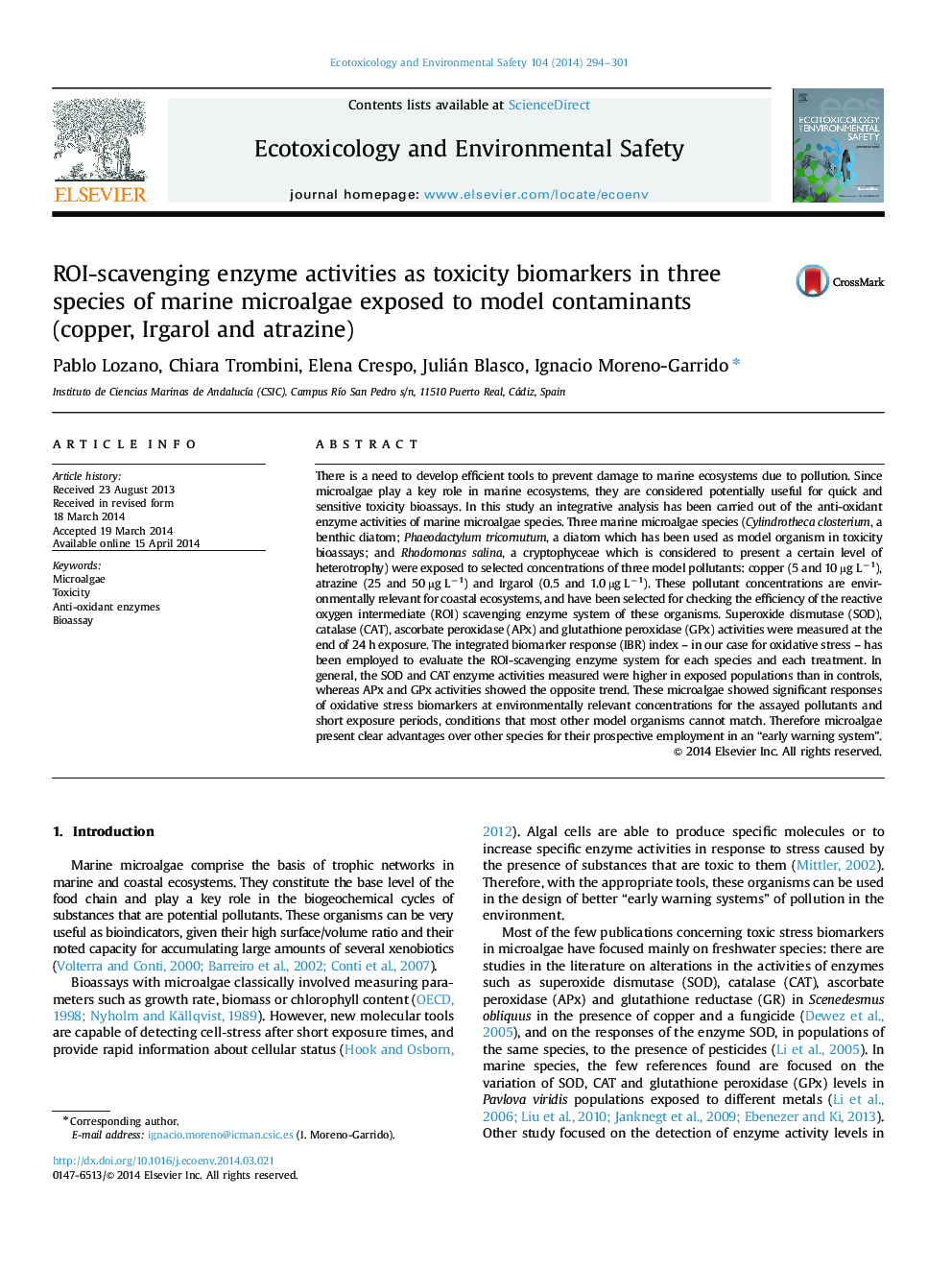| کد مقاله | کد نشریه | سال انتشار | مقاله انگلیسی | نسخه تمام متن |
|---|---|---|---|---|
| 4420143 | 1618959 | 2014 | 8 صفحه PDF | دانلود رایگان |

• Microalgal oxidative stress biomarkers showed response at realistic concentrations.
• Microalgal oxidative stress biomarkers showed response at short times.
• SOD and CAT were increased and APx and GPx inhibited in experimental conditions.
• Microalgae can be considered good target for toxicity early warning system bioassays.
There is a need to develop efficient tools to prevent damage to marine ecosystems due to pollution. Since microalgae play a key role in marine ecosystems, they are considered potentially useful for quick and sensitive toxicity bioassays. In this study an integrative analysis has been carried out of the anti-oxidant enzyme activities of marine microalgae species. Three marine microalgae species (Cylindrotheca closterium, a benthic diatom; Phaeodactylum tricornutum, a diatom which has been used as model organism in toxicity bioassays; and Rhodomonas salina, a cryptophyceae which is considered to present a certain level of heterotrophy) were exposed to selected concentrations of three model pollutants: copper (5 and 10 µg L−1), atrazine (25 and 50 µg L−1) and Irgarol (0.5 and 1.0 µg L−1). These pollutant concentrations are environmentally relevant for coastal ecosystems, and have been selected for checking the efficiency of the reactive oxygen intermediate (ROI) scavenging enzyme system of these organisms. Superoxide dismutase (SOD), catalase (CAT), ascorbate peroxidase (APx) and glutathione peroxidase (GPx) activities were measured at the end of 24 h exposure. The integrated biomarker response (IBR) index – in our case for oxidative stress – has been employed to evaluate the ROI-scavenging enzyme system for each species and each treatment. In general, the SOD and CAT enzyme activities measured were higher in exposed populations than in controls, whereas APx and GPx activities showed the opposite trend. These microalgae showed significant responses of oxidative stress biomarkers at environmentally relevant concentrations for the assayed pollutants and short exposure periods, conditions that most other model organisms cannot match. Therefore microalgae present clear advantages over other species for their prospective employment in an “early warning system”.
Journal: Ecotoxicology and Environmental Safety - Volume 104, June 2014, Pages 294–301